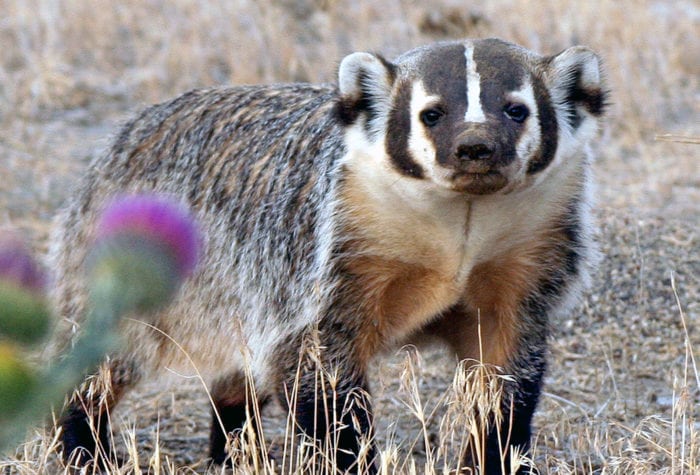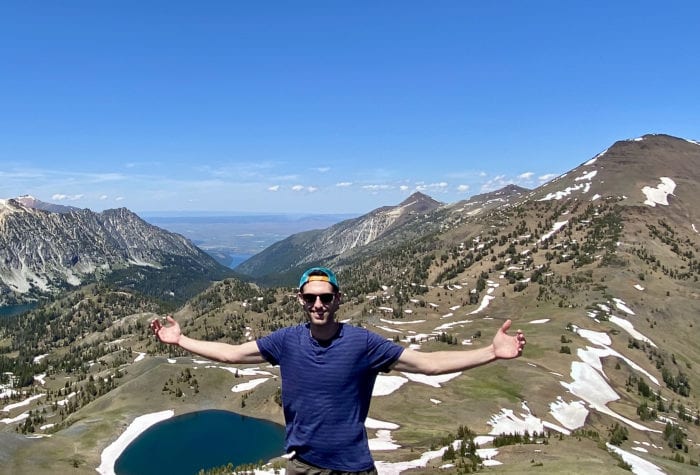Author: Caelin Weiss | Published: April 14, 2021 | Category: Profile
As we are all more acutely aware than ever, healthcare professionals and other frontline and essential workers play an immeasurable role in the wellbeing of our communities.
We spoke with three ONDA members who are healthcare providers about what inspires them to support high desert conservation, the solace they’ve found in Oregon’s desert wildlands and how wild places contribute to individual and community healing. To all the essential workers and health care professionals in ONDA’s community – you have our thanks and we hope you can enjoy a restorative desert hike soon.
Robyn Migliorini, psychologist
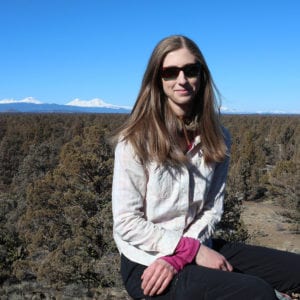
After years of dreaming, planning, and finishing her neuropsychology postdoctoral fellowship in Boston, Robyn Migliorini moved across the country to Bend, Oregon, driven by a love of the high desert honed through “internet excursions” into the region. Even from afar, Robyn felt a strong connection to the region and became an ONDA member while in Boston to support ONDA’s efforts to protect and restore desert wildlands. Now, when she’s not hiking, backpacking, hunting or rockhounding in the high desert, Robyn enjoys reading up on the animals, plants, stars and geological features she observed on her most recent trips.
As a psychologist, Robyn has a deep knowledge of the role that wild places play in our health and healing. Beyond the physical and mental benefits of recreating outdoors and in clean air, Robyn shares a sentiment familiar to many people in ONDA’s community: “wild places provide something extra.”
Wild places have relatively few distractions when compared to our day-to-day lives. With a professional specialization in attention, Robyn often laments how our busy routines make it difficult to focus our attention on what really matters. In particular, Robyn notes how near-constant access to screens frequently pulls us away from what we were doing, offers opportunities to compare ourselves to others, and conflates success with constant productivity and work. In stark contrast, wild places provide an important opportunity to more fully engage in the moment, not just physically, but mentally, too. To anyone who has experienced the vast, wild beauty of Oregon’s dry side, it will come as no surprise that these landscapes are at once inspiring, replenishing and revitalizing us.
Why Robyn initially became an ONDA member: “I really liked that ONDA is a local conservation organization, but one that still has regional influence. Essentially: connection to local community + impressive real-world accomplishments for desert conservation across Oregon. I especially appreciate ONDA’s push for protecting desert lands as designated wilderness.”
How Robyn would describe Oregon’s high desert to a friend: “Wild and expansive. Much, much more than meets the eye. Everything is even bigger and even more beautiful than it seems like it will be when you’re just looking at the map. One of the phrases that comes up a lot in my desert adventures is ‘this is even better than I expected,’ and it’s not like my expectations were low or anything.”
Nate Wilson-Traisman, therapist
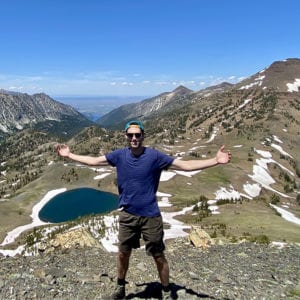
Nate Wilson-Traisman has had a lifelong connection to Oregon’s high desert. The diverse geology, dramatic colors and ancient fossils of the John Day River Basin left an impression on him during childhood adventures in the region. As an adult, the expansive view from atop Sutton Mountain, the way the John Day River slowly carves its way through the rugged landscape and the afternoon light on the Painted Hills have solidified a deep sense of appreciation and connection to desert wildlands.
Nate’s high desert excursions and professional experience as a therapist inform his perspective on the pivotal role wild places play in our health and healing processes. “There are so many forces in our lives, and our culture, that reinforce ideas of separateness. In my experience, when we feel overly separated from the people and places that surround us, we suffer. Wild places help remind me that I’m just one small part of a much larger ecosystem. This helps me feel a sense of connectedness with the world around me. I believe connectedness, or a sense of oneness with our natural environment, helps breed compassion and empathy – both crucial aspects of health and healing!”
Nate’s greatest hope for the future of desert conservation in Oregon: “My greatest hope is that Oregon’s desert continues to gain public lands protections, and is guarded from unsustainable development, so that future generations may benefit from all the region has to offer.”
“I appreciate the beauty and the history of the place. I find that the fossil beds, and the landscape’s representation of so many geological eras, offers me a perspective that’s wholly unique. When I’m there, I feel more connected to my own sense of belonging in space and time.” – Nate Wilson-Traisman
Laurel Hartwell, gastroenterologist
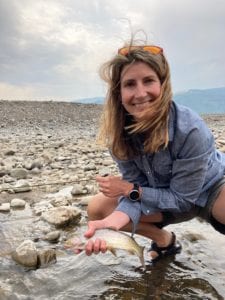
For Laurel Hartwell, Oregon’s high desert is a space for family bonding and solitude alike. While growing up in Seattle, she regularly visited the wildlands of Central Oregon with her family. And, when deciding where to raise her own family, Bend and its high desert backyard was the clear choice for her. Laurel loves the sense of isolation that comes from wide-open high desert expanses, but some of her favorite high desert memories include the ones she has made with her family at ONDA’s Annual General Meeting completing restoration work, dancing to live music and connecting with other members of ONDA’s community.
“Even though the wide-open spaces of Oregon’s high desert can be a great antidote to some of the stresses of my ‘city life’ in Bend, it is not the opposite of community or society. Often the slower pace of roaming outdoors, camping, hiking, exploring allows for more, not less, connection with the people around us. I love how the desert has no goal, no objective, no purpose. There are very few peaks, summits or established trails, and destinations can be broad and diffuse. You have to be creative and take the time to figure out what is going on with the landscapes. Many of us aren’t used to just setting out cross country to the next band of rimrock, just to see what is over there. I think the desert pushes us to be more open.”
Laurel’s favorite Oregon’s desert place: “I really love Steens Mountain. I’ve taken a number of trips out there over the years and every time it is a different experience. The topography is so dramatic and complex, but it somehow remains hidden until you are deep into it. You feel very isolated from the rest of the world, floating above it.”
Her greatest hope for the future of Oregon’s desert lands: “I would love to see progress this year in formal conservation of the Owyhee. I know ONDA and its community partners have been working on this for quite some time and it is a complex situation, but every year it feels more within reach.”
